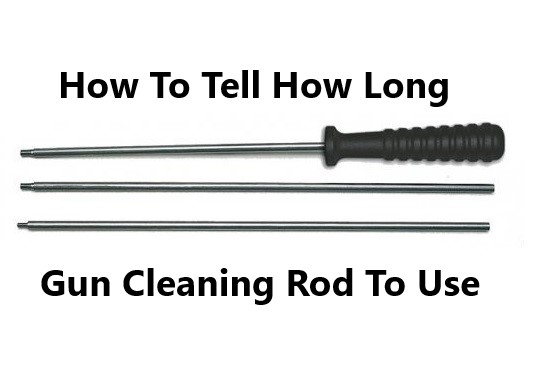You should use the best gun cleaning rod for your rifle if you aren’t already, and here’s why:
The barrel, more than any other component of a rifle, has the largest overall impact on accuracy. Every time a round is fired, a little amount of carbon from the propellant and fouling from the bullet metal adheres to the bore. That is why it is vital to clean the bore after each shooting session. It is critical to use the optimum cleaning rod for your pistol in order to get optimal performance and retain your gun’s maximum accuracy. You should use the best gun cleaning rod for your rifle and your budget to achieve the best results.
One of the most crucial questions to ask regarding a firearm cleaning rod is what size to use.
How To Tell How Long A Gun Cleaning Rod To Use
The packaging on any prospective gun cleaning rod should list the guns that are appropriate for that product. Of course, it will always make sense to choose a rod that is longer than the barrel of your weapon because you would rather it be too long than too short and not be able to reach every inch of the interior of your gun.
When a manufacturer lists the gun cleaning rod’s length, this number defines the distance from the rod tip to where the rod enters the handle.
To get a better estimate of the size you need, measure your rifle from crown to receiver rear, and select the next-longest rod. While you’d rather go too long than too short, too long of a rod can end up being unwieldy, and will bow more.
A good quality rod should make these points matter less, but again, it is smart to order the shortest rod that is longer than barrel and action length. To find out which are the best options on the market please check out our review on the best rifle cleaning rod.
What Else To Look For in A Gun Cleaning Rod
So, what should you look for when selecting the best cleaning rod for your gun? There are a few features to look for that will help you make the best decision.
Non-Flex Material: The best rods are composed of rigid materials such as brass, aluminum, or state-of-the-art composites, according to all professional shooters. When pressing a tight-fitting patch down the bore, a rod composed of one of these materials will resist bending. Because you don’t want the cleaning rod to make direct touch with the barrel, this feature is critical.
Portability: Whether you’re a recreational shooter or a serious hunter, choosing a cleaning rod that’s convenient to transport to the range or in the field is critical. The three-piece rods are easy to store in a range bag or rifle case. You can only use one-piece cleaning rods if you participate in one of the long range rifle disciplines. A good carrying case should be utilized to safeguard the rod, even if it is not as portable.
Comfortable Handle: As the rifling drives the rod to turn, the handle on the end should feel comfortable in the hand and rotate effortlessly. The cleaning attachment (brush or jag) will likely come unscrewed and become trapped in the bore if the handle cannot rotate. For the least amount of friction, some of the most expensive rods use two ball bearings.
Cross-Fitting Threads: Each joint on multi-sectional rods should have close-fitting threads so that each segment is concentric with the others. This is necessary to ensure that no measures are taken that could harm the rifling as it is forced down the bore. As a result, the threads at the rod’s end should fit the attachments snugly without slop.

Hi, I am Jerry L. Miculek and I am experienced firearms and optics expert. Guns are not just a hobby for me, they are my passion and life. You can learn more about me on my About page.
